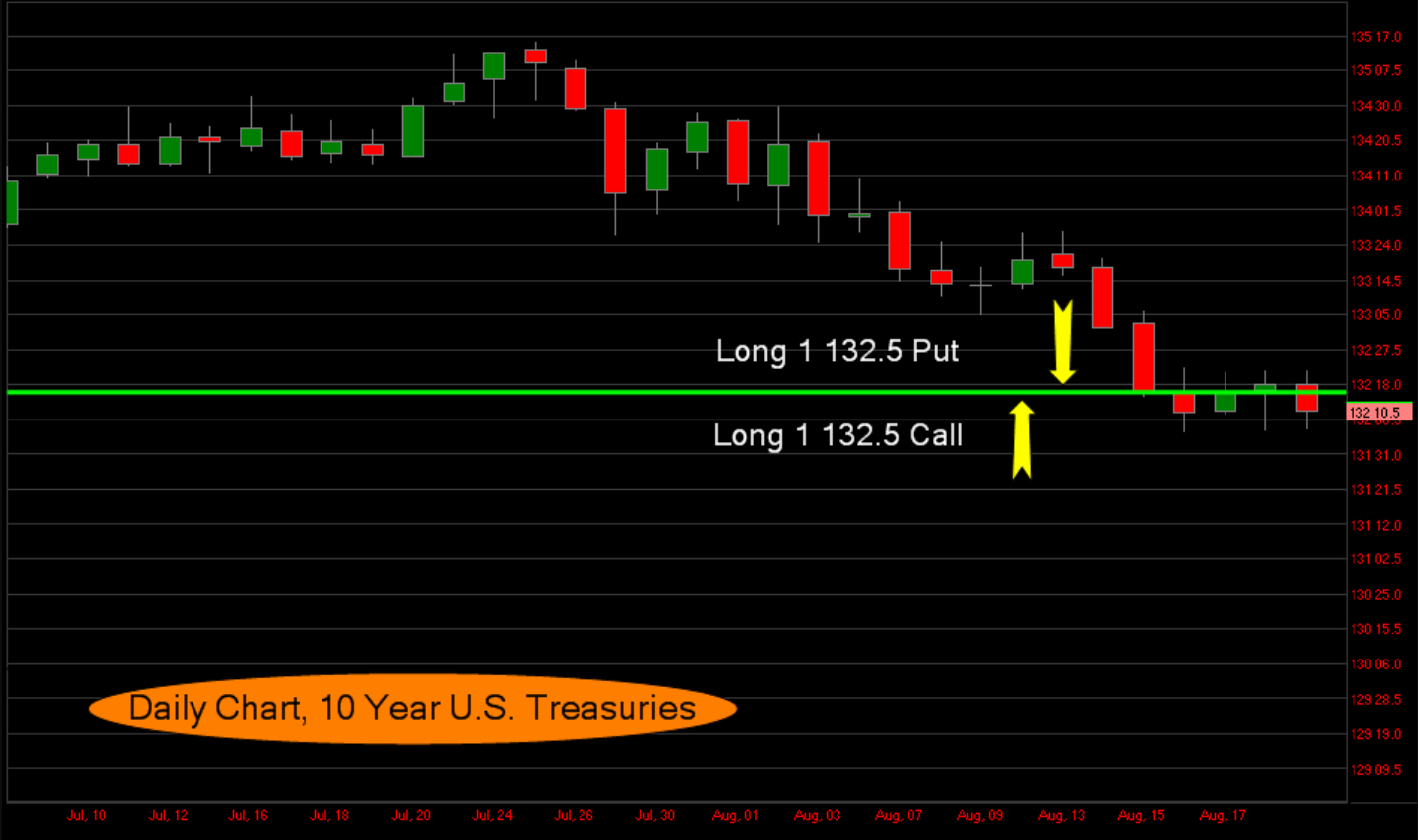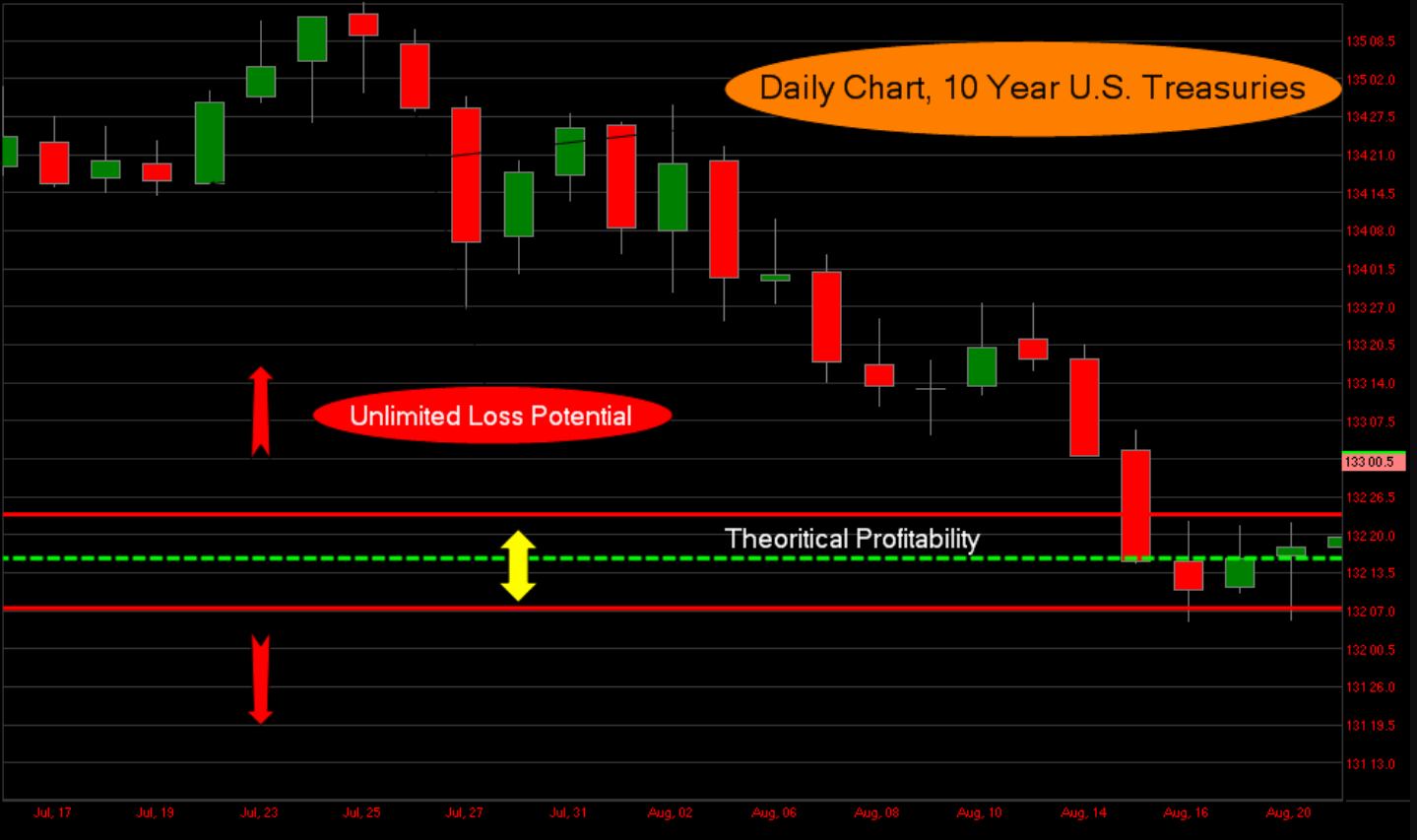We have covered the option tree strategy in the previous post. In the spirit of the campaign season, we had the readers decide which strategy we should cover next. Per the poll results, with forty-four percent of the votes, we present a review of long and short option straddles. Please keep in mind that we are here to not only service client accounts, but as brokers, it is our distinct pleasure to assist traders in any capacity. All questions are relevant and welcome.
Any trades are educational examples only. They do not include commissions and fees.
Long Straddle: We would purchase a put and purchase a call on the same contract with the same expiration date.
Example: Long straddle on September 10 year notes.
- Buy an at the money 132.5 call
- Buy an in the money 132.5 put
Maximum gain: The gain on either the call or the put option minus the premium paid for the losing option.
Option premium should be of great consideration. In these strategies, the premiums have the upmost relevance in terms of P/L. The price you purchase or write the option will determine trading ranges, profit and loss targets.
Maximum loss: The combined premium paid for the call and put.
When to use it: This strategy is best used when a trader expects the market to make a decent sized move but unsure of which direction, such as when reports or other news are set to be released. The long straddle is seeking to benefit from high volatility. Should you expect prices to fluctuate substantially in the next few days, a long straddle may be worth using.
The goal: To take advantage of directional volatility, regardless of direction.

Any trades are educational examples only. They do not include commissions and fees.
Short Straddle: We would sell a put and sell a call on the same contract with the same expiration date.
Example: Short straddle on September 10 year notes.
Maximum gain: The premium collected from short put and call options.
Maximum loss: Infinite. Uncovered options can expose traders to significant trading losses in fast moving markets. Risk management is critical when utilizing this strategy.
When to use it: A trader typically uses this strategy when he or she expects the market to trade in a tight range. For example, interest rates to trade in a tight range up to option expiration.

Any trades are educational examples only. They do not include commissions and fees.
The goal: To benefit from low volatility environments you are expecting the market to trade in a range defined by the premium collected on the options.
Things to consider: This trade is expensive in terms of option premium, so the projected move needs to be somewhat large.
Exit strategy: Short option strategies can go against you rather quick and having proper risk controls are definitely necessary.
